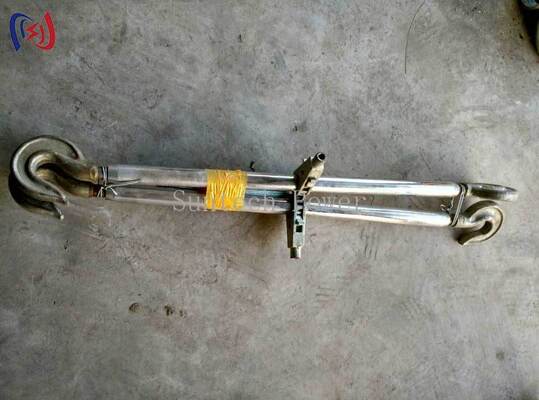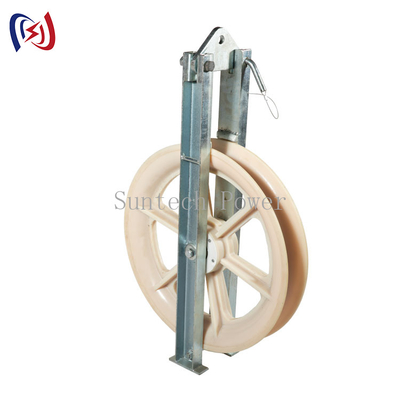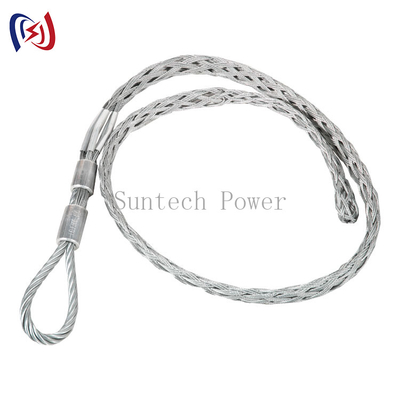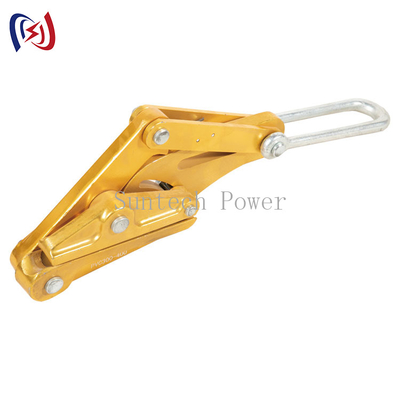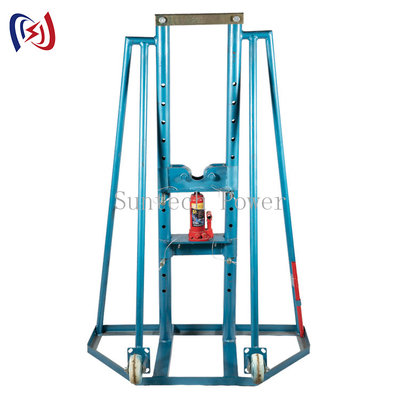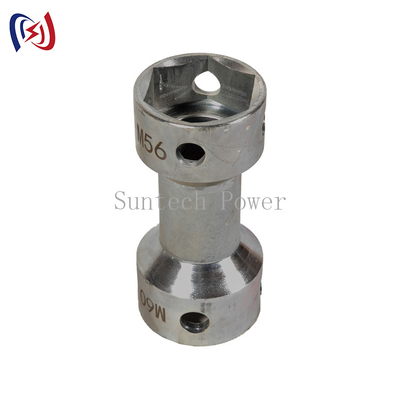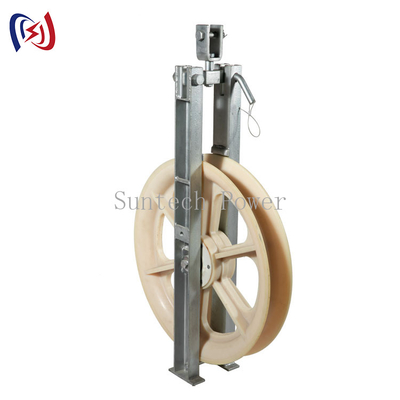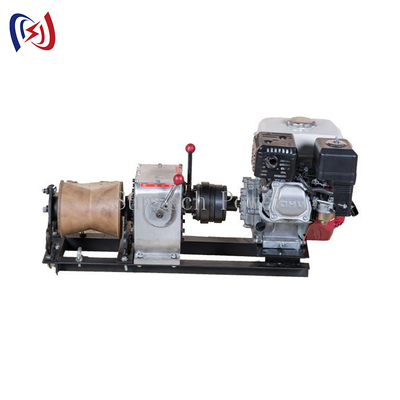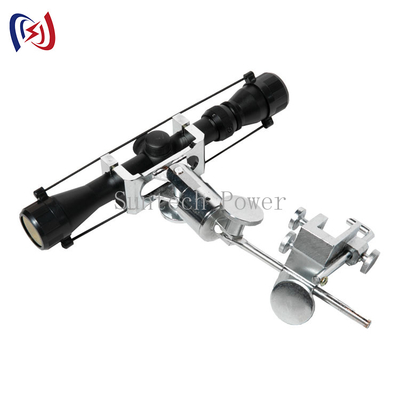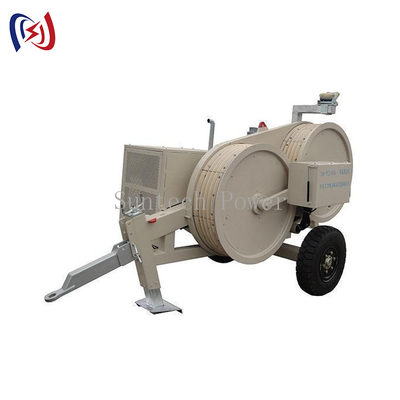Nel mondo esigente dell'installazione di cavi e fili, dalle ampie reti di telecomunicazioni ai robusti sistemi di alimentazione industriali, ogni componente nell'allestimento di trazione gioca un ruolo fondamentale. Mentre molta attenzione è rivolta ai cavi stessi, ai verricelli e alle funi di trazione, c'è un piccolo ma vitale dispositivo che spesso viene trascurato, fino a quando non si guasta. Questo dispositivo è il giunto girevole, uno strumento fondamentale per proteggere preziosi investimenti in cavi e garantire operazioni di installazione efficienti e sicure.
Per appaltatori e project manager in Asia centrale, Medio Oriente, Africa, Sud America e Sud-est asiatico, dove i progetti spesso affrontano terreni difficili e budget ristretti, comprendere e selezionare il giunto girevole giusto non è un'opzione, è una necessità. Questa guida fornisce una panoramica approfondita e oggettiva dei giunti girevoli, della loro funzione e dei criteri di selezione chiave per supportare le tue decisioni di approvvigionamento.
Per esplorare un'ampia gamma di giunti girevoli di grado industriale progettati per l'affidabilità in condizioni difficili, ti invitiamo a visitare la nostra homepage dei prodotti per specifiche e opzioni dettagliate.
Demistificare il giunto girevole: più di un semplice connettore
Fondamentalmente, un giunto girevole è un dispositivo meccanico installato tra una fune di trazione (o fune del verricello) e un'impugnatura per cavi (nota anche come calza tiracavo o calza per cavi). La sua funzione primaria e più importante è quella di ruotare liberamente sotto carico, impedendo così che la torsione e la rotazione vengano trasferite dalla fune di trazione al cavo durante l'installazione.
Perché questo è così cruciale?
Durante una trazione, soprattutto una trazione a lunga distanza o complessa attraverso condotti con più curve, la fune di trazione vuole naturalmente torcersi e arrotolarsi. Questa forza rotazionale, se collegata direttamente al cavo, ha conseguenze devastanti:
•
Danneggiamento del cavo: la coppia può piegare, schiacciare gravemente o danneggiare in altro modo i conduttori interni e l'isolamento dei cavi elettrici e in fibra ottica. Ciò compromette la loro integrità e le prestazioni fin dal primo giorno.
•
Problemi di svolgimento: la forza di torsione può far sì che il cavo sulla bobina si leghi, salti fuori o si danneggi, interrompendo l'intera operazione.
•
Pericoli per la sicurezza: un cavo sotto estremo stress torsionale può guastarsi catastroficamente, potenzialmente rompendosi e frustando indietro, creando un grave rischio per la sicurezza dell'equipaggio.
•
Inefficienza: la torsione accumulata aumenta l'attrito all'interno del condotto, rendendo la trazione più difficile, riducendo la distanza raggiungibile e mettendo a dura prova l'attrezzatura di trazione.
Il giunto girevole funge da componente sacrificale, assorbendo tutta questa energia rotazionale e consentendo al cavo di essere tirato in modo rettilineo e senza torsioni. È il guardiano indispensabile che assicura che il cavo si srotoli dalla bobina senza problemi e si installi senza danni.
Anatomia di un giunto girevole: componenti chiave e design
Sebbene i design varino, un giunto girevole industriale di alta qualità è tipicamente composto da diversi componenti chiave:
1.
Corpo/Alloggiamento: il telaio strutturale principale, spesso realizzato in acciaio ad alta resistenza o altre leghe robuste, progettato per resistere alle forze di trazione.
2.
Meccanismo girevole: il cuore dell'unità. Ciò comporta cuscinetti di precisione (cuscinetti a sfera o a rulli) e piste che consentono una rotazione fluida sotto un carico immenso e una pressione rotazionale.
3.
Ceppi o occhielli: ceppi forgiati integrati o grandi occhielli a entrambe le estremità forniscono punti di collegamento sicuri e facili per l'impugnatura del cavo da un lato e la fune di trazione dall'altro. Questi sono progettati per ridurre al minimo la concentrazione di stress.
4.
Sistema di tenuta: fondamentale per la durata. Guarnizioni di alta qualità (spesso O-ring) proteggono il meccanismo interno dei cuscinetti da contaminanti come sporco, polvere, sabbia e umidità, che sono prevalenti nei cantieri nelle regioni indicate.
L'attenzione ingegneristica è rivolta alla creazione di un dispositivo che offra una minima resistenza rotazionale (bassa coppia di distacco) mantenendo al contempo un'immensa resistenza alla trazione assiale.
Guida all'acquisto: fattori critici per la selezione del giunto girevole giusto
La selezione del giunto girevole sbagliato può essere dannosa quanto non usarne uno. Per i responsabili degli approvvigionamenti e i responsabili del sito, ecco i fattori tecnici e pratici essenziali da considerare.
1. Limite di carico di lavoro (WLL) e fattore di sicurezza:
Questa è la specifica più critica. Il WLL indica il carico massimo che il giunto girevole è progettato per gestire in sicurezza.
•
Calcolo: è necessario scegliere un giunto girevole con un WLL significativamente superiore alla tensione di trazione massima prevista durante l'operazione. Una regola empirica comune è quella di selezionare un giunto girevole con un WLL pari ad almeno 1,5 o 2 volte la forza di trazione massima prevista.
•
Fattore di sicurezza: produttori affidabili integrano un elevato fattore di sicurezza (ad esempio, 4:1 o 5:1 resistenza alla rottura rispetto al WLL). Cerca sempre un WLL chiaramente contrassegnato sul prodotto.
2. Diametro e peso del cavo:
La capacità del giunto girevole deve essere abbinata alle dimensioni e al peso del cavo da tirare. Tirare un cavo di alimentazione principale pesante e di grande diametro richiede un giunto girevole molto diverso rispetto a tirare un cavo microdotto in fibra ottica più leggero. Assicurarsi che le specifiche del prodotto corrispondano ai tipi di cavi tipici.
3. Prestazioni di rotazione:
Non tutti i giunti girevoli ruotano altrettanto bene sotto carico.
•
Bassa coppia di distacco: questo si riferisce alla forza iniziale richiesta per avviare la rotazione del giunto girevole. Un valore inferiore è migliore, in quanto significa che il giunto girevole inizierà a ruotare facilmente prima che si accumuli una coppia pericolosa nel cavo.
•
Cuscinetti: informarsi sul tipo e sulla qualità dei cuscinetti utilizzati. I cuscinetti a sfera sigillati e lubrificati a vita sono ideali per fornire una rotazione fluida e continua.
4. Qualità costruttiva e durata:
Il dispositivo deve resistere a condizioni difficili.
•
Materiale: cercare giunti girevoli realizzati in acciaio legato di alta qualità, trattato termicamente per resistenza e tenacità, con rivestimenti resistenti alla corrosione (ad esempio, zincatura, galvanizzazione) per resistere agli ambienti esterni e umidi.
•
Costruzione: i componenti forgiati sono generalmente superiori a quelli fusi o saldati, in quanto hanno maggiore resistenza e resistenza alla fatica.
•
Tenuta: la tenuta con classificazione IP è un forte indicatore di qualità, proteggendo il meccanismo interno da contaminanti abrasivi come sabbia e polvere, comuni in Medio Oriente, Africa e Asia centrale.
5. Facilità d'uso e manutenzione:
• Collegamento: assicurarsi che i perni dei ceppi siano facili da inserire e rimuovere, anche indossando i guanti. I perni vincolati sono una caratteristica preziosa per evitare perdite in loco.
• Manutenzione: sebbene molti giunti girevoli di alta qualità siano sigillati e non richiedano manutenzione, alcuni potrebbero richiedere una lubrificazione periodica. Comprendere le esigenze di manutenzione prima dell'acquisto.
6. Standard e certificazione:
I prodotti conformi agli standard internazionali (ad esempio, ASME, ISO) o certificati da organizzazioni terze forniscono un ulteriore livello di fiducia nella loro qualità e nei test di sicurezza.
Investire in un giunto girevole di alta qualità e correttamente specificato è un costo minore rispetto al prezzo di un cavo danneggiato o di un progetto bloccato. Per una selezione di giunti girevoli che soddisfano questi rigorosi criteri, informazioni dettagliate sono disponibili sul nostro sito Web principale.
Migliori pratiche operative e sicurezza
• Armamento: utilizzare sempre il giunto girevole tra la fune di trazione e l'impugnatura del cavo. Non collegarlo mai direttamente al tamburo del verricello.
• Ispezione: eseguire un'ispezione pre-operativa prima di ogni utilizzo. Verificare la presenza di eventuali segni di danneggiamento, deformazione, crepe o gioco eccessivo nei cuscinetti. Un giunto girevole danneggiato deve essere immediatamente rimosso dal servizio.
• Evitare il carico laterale: assicurarsi che la trazione sia diritta e in linea con l'asse del giunto girevole. Il carico laterale può ridurre drasticamente il suo WLL effettivo e portare a un guasto prematuro.
• Non superare il WLL: non utilizzare mai un giunto girevole sottovalutato per il lavoro. Questo è estremamente pericoloso.
Conclusione: l'investimento intelligente per trazioni di cavi impeccabili
Nell'equazione complessa di un progetto di installazione di cavi di successo, il giunto girevole è una variabile semplice ma potente. È una misura proattiva, un piccolo investimento che salvaguarda investimenti molto più grandi in cavi e infrastrutture. Prevenendo danni costosi, evitando ritardi nei progetti e migliorando la sicurezza dell'equipaggio, un giunto girevole affidabile dimostra il suo valore molte volte.
Per le società di ingegneria e i team di installazione che lavorano in mercati internazionali diversi e impegnativi, la scelta dell'attrezzatura giusta è alla base della professionalità e dell'affidabilità. Comprendere il ruolo fondamentale del giunto girevole assicura che le tue operazioni funzionino senza intoppi, dall'inizio alla fine.
Per equipaggiare i tuoi team con i giunti girevoli robusti e affidabili di cui hanno bisogno per eseguire i progetti in modo impeccabile, ti invitiamo a sfogliare il nostro catalogo prodotti completo disponibile sul nostro sito Web. Fai la scelta informata per la protezione e le prestazioni.

 Il tuo messaggio deve contenere da 20 a 3000 caratteri!
Il tuo messaggio deve contenere da 20 a 3000 caratteri! Si prega di controllare la tua email!
Si prega di controllare la tua email!  Il tuo messaggio deve contenere da 20 a 3000 caratteri!
Il tuo messaggio deve contenere da 20 a 3000 caratteri! Si prega di controllare la tua email!
Si prega di controllare la tua email! 
